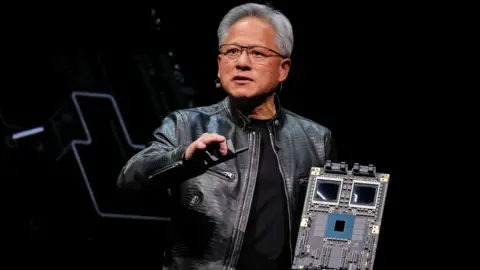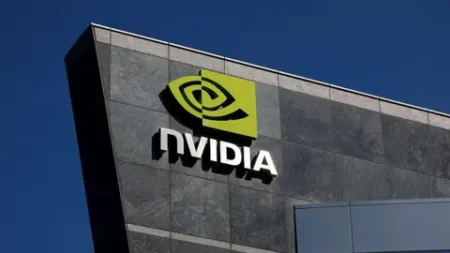In an increasingly complex landscape of international business and geopolitics, US semiconductor giants Nvidia and AMD have struck a significant financial agreement with the United States government. As reported by a source familiar with the details, both companies have consented to remit 15% of their revenue generated from semiconductor sales in China to the US Treasury. This arrangement is crucial for obtaining the necessary export licenses to operate in China, which remains a vital market for semiconductor products.
According to Nvidia, adhering to the regulations set forth by the US government is a prerequisite for their continued involvement in global markets. The company stated to BBC that although it has not shipped its H20 chips to China in recent months, it expresses hope that the export control regulations will facilitate their ability to compete both in China and worldwide. AMD, on the other hand, has not yet provided a comment regarding this significant development.
The financial commitment under this agreement entails that Nvidia will allocate 15% of its revenues specifically derived from H20 chip sales, while AMD is expected to set aside the same percentage of its earnings from the sale of its MI308 chips. The Financial Times was the first to bring this arrangement to light, indicating the complexities surrounding international trade in the semiconductor domain.
Historically, the sale of Nvidia’s H20 chips to clients in Beijing had faced severe restrictions due to national security concerns raised by American authorities. Notably, these security apprehensions led to a ban on the sales initiated during the Trump administration, with Nvidia subsequently announcing that this ban was now slated for reversal. The H20 chip was developed with the Chinese market in mind in response to escalating restrictions put in place by the Biden administration back in 2023. The culmination of these events led to a complete ban being implemented during the Trump administration in April of the same year.
Nvidia’s CEO, Jensen Huang, has been actively engaged in discussions and negotiations that span both sides of the Pacific. His efforts aimed to once again allow for the sale of chips to the crucial Chinese market included a recent meeting with none other than US President Donald Trump, signifying the importance of these negotiations at the highest levels of government and business.
The re-launch of chip sales to China occurs amidst a backdrop of decreased trade provocations between the United States and China. Recently, Beijing has eased its controls on rare earth exports – critical materials for semiconductor manufacturing – while the US has lifted prior restrictions that were in place against firms specializing in chip design software operating in the Chinese market. In a strategic bid to alleviate long-standing tariff disputes, both countries brokered a 90-day truce back in May, which has fostered further meetings among trade officials from both nations.
Despite the numerous high-level discussions that have taken place in recent weeks, a consensus to extend the tariff pause has not yet been established. This situation comes in the wake of an impending deadline on August 12, which could determine the future course of trade relations between these two economic powerhouses.
In sum, the agreement reached between Nvidia, AMD, and the US government indicates a careful balancing act. Both technological giants are navigating the tightrope of market access in China while ensuring compliance with US regulations—a complex dance of diplomacy and business that is reflective of broader geopolitical tensions. As companies like Nvidia and AMD align their strategies with government policies, they continue to shape the global semiconductor landscape in profound ways.











